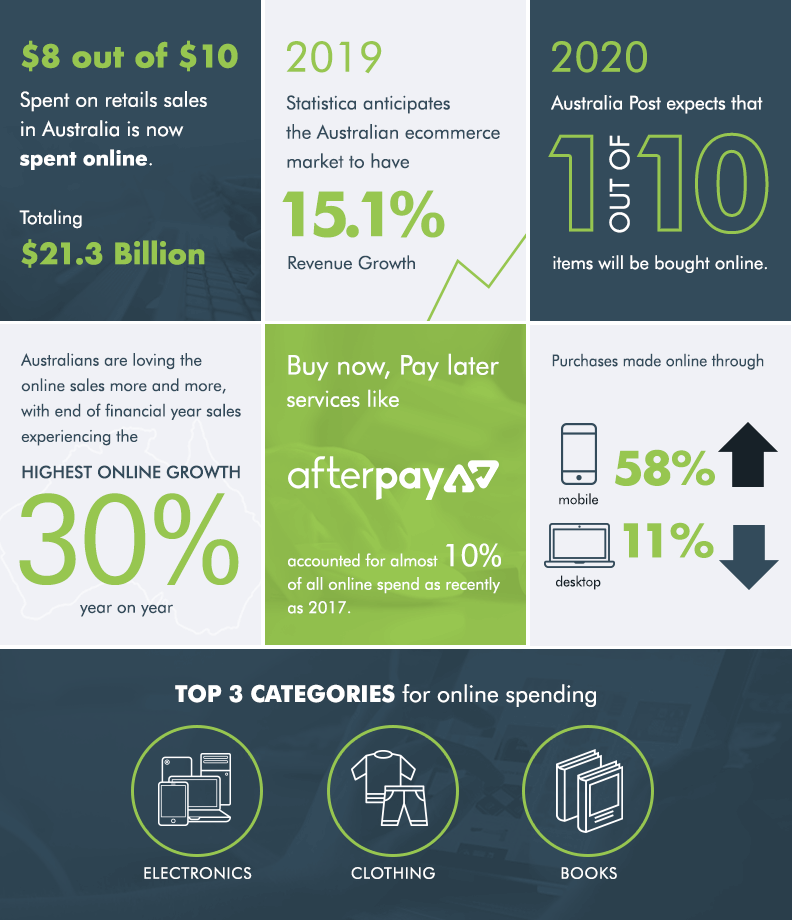In the early days of the consumer internet, online marketing was at its simplest. You created a website and let it be your online shopfront – that was more or less it. But in real-world terms, that is now the equivalent of putting out a sandwich board in front of your physical shop: useful if you happen to be walking directly past, but very limited as a marketing tool.
That’s where ecommerce marketing comes in. In fact, recent estimates are that over AU8.8 billion was spent on marketing online 2018. In percentage terms, that will mean that more than 50 cents of every marketing dollar spent will be spent on a digital medium.
But there is absolutely zero sense in reallocating a percentage of your marketing and advertising budget to ecommerce marketing without a firm understanding of what it is, what it can deliver, and how exactly you can optimise every dollar you spend. That’s what we’ve set out to do here today.
We’ll take you through the Australian ecommerce marketing landscape as it is today. We then take you through the major ecommerce marketing strategies, how to develop an ecommerce marketing plan, some marketing tips on how to further improve performance plus the benefits of ecommerce marketing and the real returns on investment you can expect if you implement an ecommerce marketing strategy effectively. We will then dive into the detail of likely future trends in ecommerce marketing.

